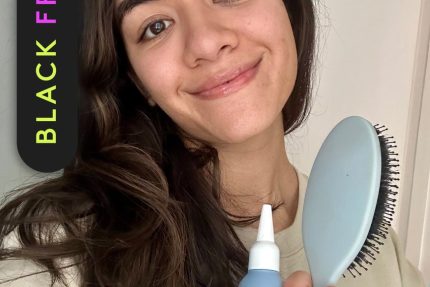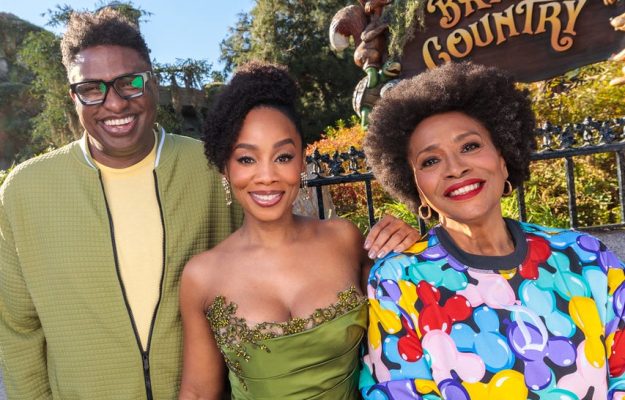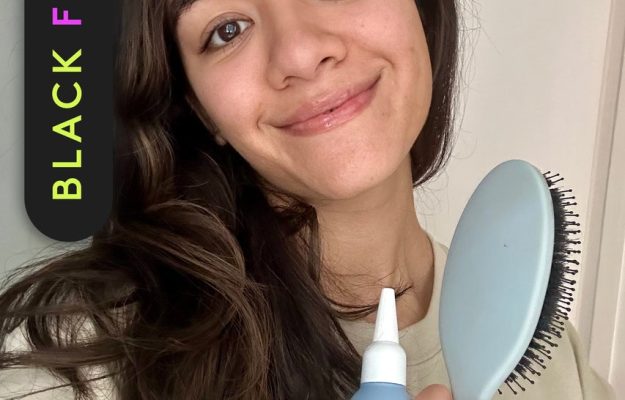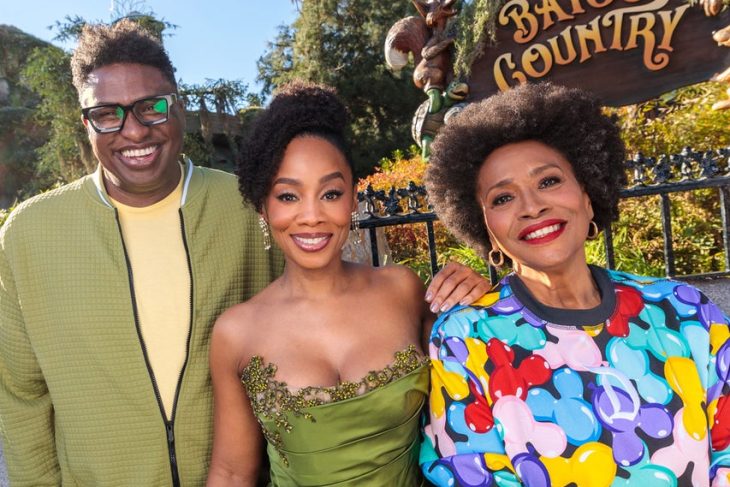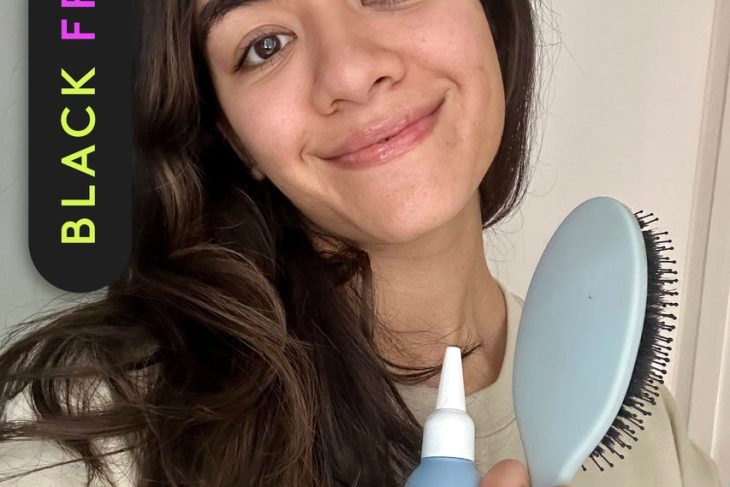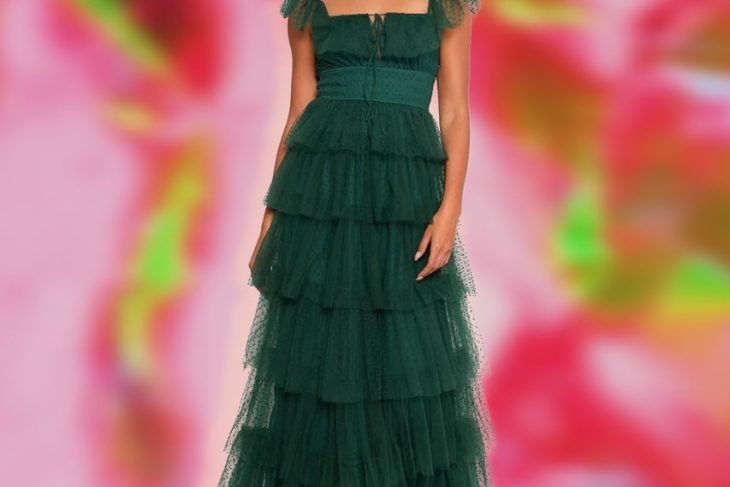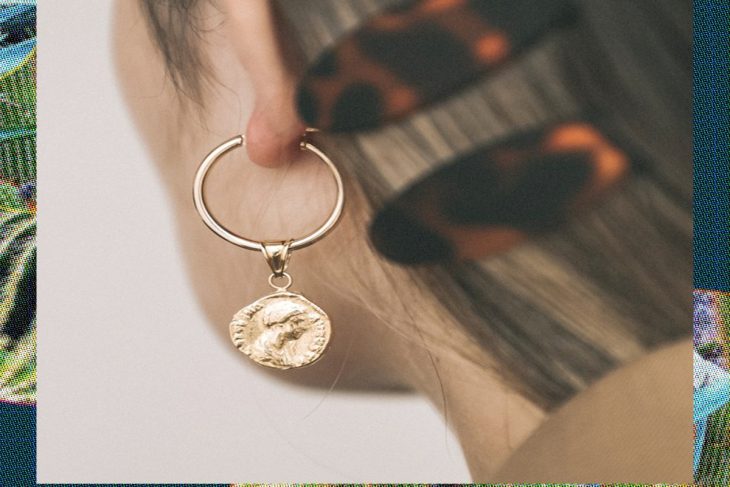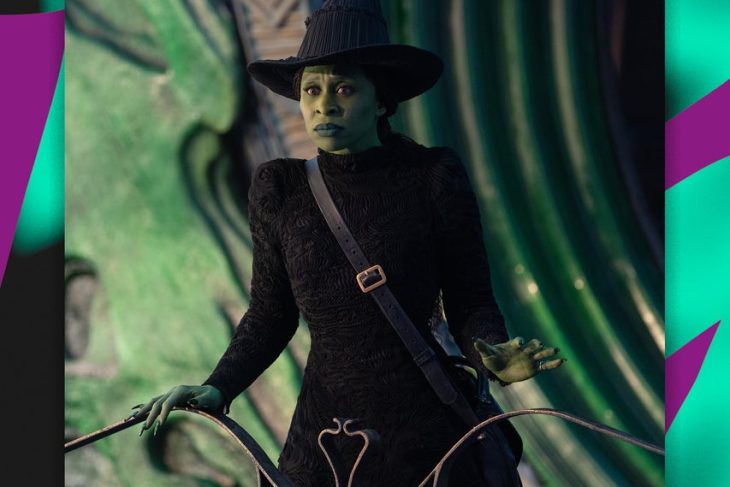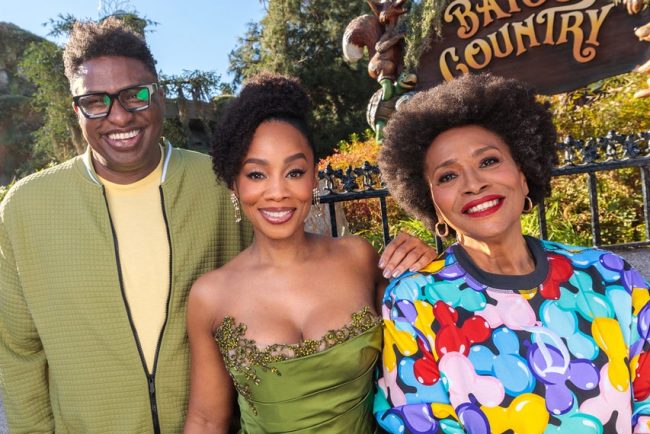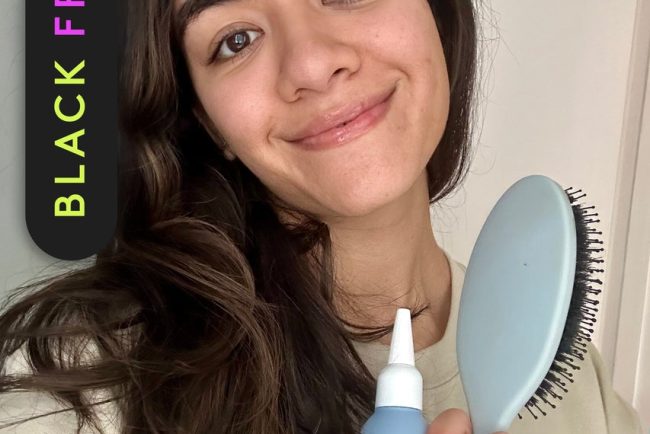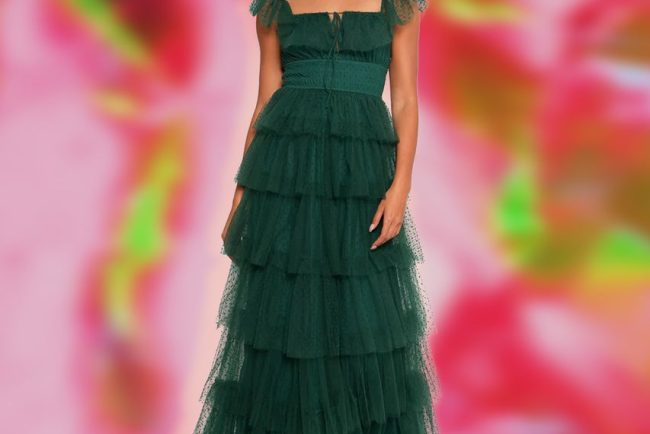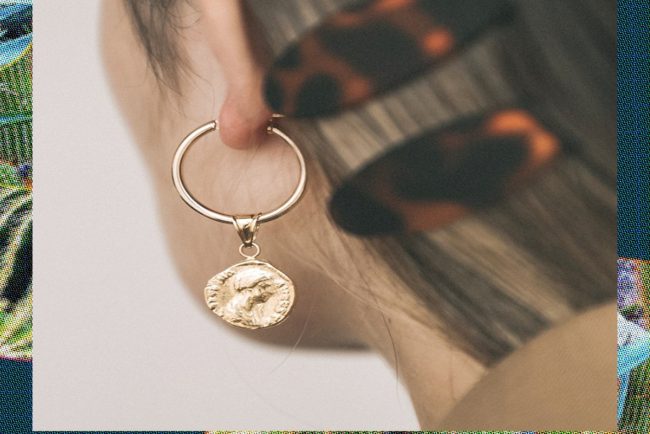
Achieve Hydrated, Defined Curls: 7 Proven Tips From Mielle’s Monique Rodriguez
As someone with thick, dry, and coarse 3C curls, I can confidently say that the right products (and even advice) are hard to come by — and it’s because most of them just aren’t made with our unique hair types and textures in mind. And […]
FASHION
Slouchy Jackets Are This Winter’s Cool Girl-Approved Outerwear Trend
.disclaimer{width:90%;margin-bottom:1rem}.disclaimer__lines{width:100%;margin:0 auto;border-bottom:1px solid #999;padding:0;max-width:150px}.disclaimer__copy{width:100%;max-width:355px;font-family:Brown Regular,sans-serif;font-size:.9rem;font-weight:300;line-height:1.3em;color:#333;padding:0 0 .4rem;margin:1rem auto;text-align:center} All linked products are independently selected by our editors. If you purchase any of these products, we may earn a commission. While some of us count down to the moment we can bust out our trench coats […]
FASHION
In Dune: Prophecy, Women Actually Do Run The World
On its surface, the Dune universe is run by men. The Dune movies are about the chosen one, Paul Atreides, and his ascension to power among men. And, yes, the Imperium is ruled by an emperor who oversees the Great Houses (also led by men). […]
FASHION


How to Recycle An Old Backpack
Backpacks are an essential part of our daily lives, from school to work to outdoor… The post How to Recycle An Old Backpack appeared first on Earth911.
style-&-fashionBackpacks are an essential part of our daily lives, from school to work to outdoor…
The post How to Recycle An Old Backpack appeared first on Earth911.

Guest Opinion: Recycle Cork To Replace Petroleum-Based Polymers and Foams
Most people recognize that wine corks are special. You pop them from the bottle, and… The post Guest Opinion: Recycle Cork To Replace Petroleum-Based Polymers and Foams appeared first on Earth911.
style-&-fashionMost people recognize that wine corks are special. You pop them from the bottle, and…
The post Guest Opinion: Recycle Cork To Replace Petroleum-Based Polymers and Foams appeared first on Earth911.
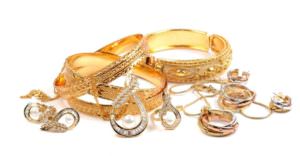
How to Find Ethical Jewelry
No one wants to adorn themselves with environmental destruction and human suffering. Unfortunately, there is… The post How to Find Ethical Jewelry appeared first on Earth911.
style-&-fashionNo one wants to adorn themselves with environmental destruction and human suffering. Unfortunately, there is…
The post How to Find Ethical Jewelry appeared first on Earth911.

Guest Opinion: The Environmental Impact of Lab-Grown Diamonds
Diamonds are diamonds wherever they come from, right? Depends on whether you’re asking a jeweler,… The post Guest Opinion: The Environmental Impact of Lab-Grown Diamonds appeared first on Earth911.
style-&-fashionDiamonds are diamonds wherever they come from, right? Depends on whether you’re asking a jeweler,…
The post Guest Opinion: The Environmental Impact of Lab-Grown Diamonds appeared first on Earth911.

DIY Summer Style Ideas
Before you head to the mall for that new summer trend, take a second look… The post DIY Summer Style Ideas appeared first on Earth911.
style-&-fashionBefore you head to the mall for that new summer trend, take a second look…
The post DIY Summer Style Ideas appeared first on Earth911.

Mindfulness Around the Globe
From forest bathing that relieves stress and boosts mood to cacao ceremonies for inner awakening and creative guidance, cultures all over the planet still guide and influence us. It was the trailblazer Jon Kabat-Zinn, PhD, who coined the textbook definition of mindfulness: “Mindfulness is the awareness that emerges […]
UncategorizedFrom forest bathing that relieves stress and boosts mood to cacao ceremonies for inner awakening and creative guidance, cultures all over the planet still guide and influence us.
It was the trailblazer Jon Kabat-Zinn, PhD, who coined the textbook definition of mindfulness: “Mindfulness is the awareness that emerges through paying attention in a particular way: on purpose, in the present moment, and nonjudgmentally.”
Mindfulness is not a new concept. Buddhism has extolled the powers of mindfulness for thousands of years. Many of these practices—especially meditation, mindful movement (yoga, tai chi, etc.) and healing breathwork (pranayama)— have migrated to the West and become standard fare in our quest for accessing deeper levels of relaxation.
For a lot of people in the western world it’s a means to escape the stresses of modern life, but what does mindfulness mean to other communities? Learning about the different forms we see around the globe opens our eyes and hearts to cultures and traditions beyond our own.
Thanks to technology, we are all global citizens with access to many inspiring and powerful practices, rituals, traditions. I’ve had the opportunity to access many firsthand, through my career traveling to every corner of the globe and immersing myself in other cultures. From the Native American sweat lodge to Japan’s tea ceremony, from vibrational healing in the Yucatán Peninsula’s sound temple to Bali’s holy water purification ceremonies, we have something to learn from each authentic method practiced. Let the possibilities inspire you.

From Burma: Sweeping (or Body Scanning)
The traditional Burmese meditation practice called “sweeping” is essentially body scanning, and can be an effective way to begin a mindfulness meditation practice for anyone. It’s so effective that it’s become an integral part of the Mindfulness-Based Stress Reduction (MBSR) program founded by Kabat-Zinn. (MBSR has become the gold standard for mindfulness training in the medical/psychotherapy communities in the U.S. and worldwide.)
The practice involves mentally “sweeping” through the body from head to toe bringing an affectionate, openhearted, nonjudgmental and interested attention to its various regions. The awareness of sensations in the body provides insight into deeper emotions without requiring you to judge or try to change them. It trains you to stay present in your body even if, in the case of pain and discomfort, you don’t like what you’re experiencing.
As we train our mind to be more aware of sensory experiences, we become more intuitive and accepting. We learn how sensations in our body are tied to emotional states. Stress and the resultant emotions like anger, sadness, anxiety, fear (among others) cause physical symptoms like tightness/constriction in body tissues, hypertension, chest pain, headaches and more. Bottom line, body scanning builds your ability to focus, tune into bodily afflictions (with the hope that you can ultimately work on assuaging them) and ultimately be more present in your life.
How to? Sitting or lying down, breathe deeply throughout. Starting at the top of the head, slowly and evenly scan through the body, all the way down to the toes, noticing every part of the body and what feels comfortable or uncomfortable. Remember, you’re not trying to change anything. Be curious and open to what your body is telling you without judgement. Ask yourself what each body part is feeling. Is there pressure, tension, heat, pulsing, tingling, heaviness, lightness?
If your mind wanders, bring your attention back to breathing and exploring sensations in your body until you’re done with the practice.
From the Himalayas: Metta (or Loving-Kindness) Meditation
Taught by Buddha 2,600 years ago and consistently practiced in the Himalayan region of Asia to this day, this healing practice has become a mainstay in the U.S. and globally. Metta translates to “loving- kindness,” with the practice focused on growing a sense of kindness and goodwill by directing positive thoughts to self and others.
How to? It involves repeating a set of phrases as a mantra of sorts that you, and all beings, be safe, happy, peaceful and healthy. Possible phrases could be:
“May I (you/we) be safe and protected from harm.”
“May I (you/we) be joyful.”
“May I (you/we) be peaceful.”
“May I (you/we) be strong and healthy.”
You may also create your own phrases that resonate with your heart.
Say or think these phrases to yourself (repeat as desired). Then “say” them to someone you feel close to, then someone more neutral, then someone who may be having a difficult time, and finally expanding outward to all of creation.
When we open our hearts and send loving-kindness without distinction, we’re more apt to include instead of exclude, to connect instead of overlook, to care instead of be indifferent.

Shinrin means “forest,” and yoku means “bath.” So shinrin-yoku means bathing in the forest atmosphere, or taking in the forest through our senses.
From Japan: Shinrin-Yoku (or Forest Bathing)
One of my important teachers, Deepak Chopra, MD, says, “Harmonizing your biological rhythms with the rhythms of nature minimizes entropy and reverses aging.” Enter the practice, shinrin-yoku. Shinrin means “forest,” and yoku means “bath.” So shinrin-yoku means bathing in the forest atmosphere, or taking in the forest through our senses. It is incredibly simple: Breathe intentionally while taking meandering, meditative walks through the forest.
Japan’s Forestry Agency recommends forest bathing as a stress-reliever and mood-booster and says it encourages clearer intuition, increased flow of energy, deepening of friendships and overall higher levels of happiness. It helps you unplug from technology, be in the present moment and slow down. Extensive studies have found this practice can help with everything from depression and anxiety to fatigue and hypertension. It is said to lower stress hormones, balance the nervous system and boost immunity.
How to? Take in nature through all of your senses: Breathe deeply and taste the freshness of the air. Listen to the gentle wind dancing around you and notice the different birdsong. Look closely at the different colors and textures of the trees and the sunlight filtering through their branches. Smell the vibrant, earthy fragrance of the forest and breathe in its natural aroma-therapy. Place your hands on the trunk of a tree—hug it even! Feel the textures of bark, moss, stones. See the universe in a leaf. Dip your fingers or toes in the local stream, pond or lake. Lie on the ground and feel your nervous system connecting with the nervous system of the forest. Drink in the flavor and mood of the forest as boosting your sense of joy and calm.
From Africa: Ubuntu – “I Am Because We Are”
In African culture, Ubuntu is a holistic and long revered way of life emphasizing the interdependence and interconnectedness of all people.
The word Ubuntu means “I am because we are.” It’s an expression of appreciation for others, an acknowledgement that we’re all part of the same family and we’re in this life together. This sense of community manifests itself as kindness, compassion, caring, sharing, fairness and honesty.
The Ubuntu greeting, often translated as “I see you,” carries a profound meaning. It’s a shared salutation to our divinity. It extends beyond superficial observation and signifies a deep recognition and understanding of others. When one says, “I see you” in the context of Ubuntu, they’re acknowledging and affirming the inherent worth, dignity and value of the person before them. It goes beyond physical appearance and encompasses seeing someone’s essence, their emotions, struggles and joys. It’s an act of embracing and honoring their humanity, regardless of any external factors or differences.
“I see you,” reminds us to see others not only with our eyes but with our hearts and minds, acknowledging the richness and diversity of the human experience. It inspires us to build bridges of compassion and understanding, contributing to a more harmonious and inclusive world.
How to? Say the greeting “I see you” when communing with others, or silently repeat as a mantra to remember to look beyond surface-level appearances and understand the deeper essence of others—treating every individual with respect, kindness and empathy; embracing your shared humanity; and fostering a sense of connection and understanding. Practice generosity. Focus on interacting with others with care, supporting those who need you. In turn, allow yourself to be supported by friends and family.

At the heart of the Ho’oponopono spiritual tradition is the practice of forgiveness and reconciliation as a means to improve one’s relationship with self, with others and the world at large.
From Hawaii: Ho’oponopono
Ho’oponopono means “to make things right.” This ancient practice has long brought healing and reconciliation to families, community members and individuals through Hawaii as well as all islands of Oceania. The concepts and rituals continue to this day.
At the heart of this spiritual tradition is the practice of forgiveness and reconciliation as a means to improve one’s relationship with self, with others and the world at large. And it all starts from within: by restoring self-love and inner balance. This is the powerful peace-making mantra at the center of this practice: “I’m sorry, please forgive me, thank you, I love you.”
How to? You can recite, chant, sing as a prayer or meditation—directing to yourself, others, as well as situations where transgressions (unintentional or not) have occurred. As you recite it repeatedly— anger, sorrow, shame, disappointment or any guilt you may feel loosens its grip on you. It opens your heart, releasing negative thoughts or emotions, giving you and others a clean slate. It’s a powerful way to cultivate empathy, heal old wounds and let go of grudges. And always with loving-kindness, compassion and grace. The physical and emotional benefits for our wellbeing are profound.
The best-known part of the ritual is the mantra, but it includes a lot of “authentic relating” as well. Everyone in the family or community—often guided by a wise elder— takes their turn to speak their “truth,” until everyone feels harmonious and at peace. This is conscious, compassionate communication at its best.
If you’re about to enter into a difficult conversation with someone, reciting this mantra to yourself beforehand can help you remain calm, empathetic and understanding. A better outcome may be achieved.

From Costa Rica: The Cacao Ceremony
Originating with the Mayans, cacao ceremonies have been around for thousands of years, and although originating in Central and South America, they’re now practiced in many parts of the world. The scientific genus name for cacao is theobroma, which translates to “food of the gods,” and the Mayans believed that cacao was a key ingredient in restoring balance and connecting to the divine. Costa Rica is a particularly high vibration place for this practice.
Used for medicinal and spiritual purposes to achieve inner awakening and creative guidance, this ancient ceremony elevates our energy, grounds us, and connects us to our heart and feelings. Cacao has long been used to heal and harmonize mental, physical and spiritual layers of our being, creating wholeness. As a shamanic practice, it opens the spirit world for us to journey through and can awaken ancestral memory—remembering and honoring our ancestors.
How to? This sacred ritual involves gathering with others to drink cacao in a warm liquid form, while opening our heart to unconditional love, sharing thoughts of gratefulness, setting intentions and creating a space for connection, healing and inspiration. Praying, chanting, singing, as well as shamanic tools like ancestral sounds, drumming and smudging, may be used as well. A traditional ceremony may last for several hours.
You can also enjoy this daily ritual as a simple yet unique mindfulness meditation to deeply transform the way you encounter the world. Peacefully sit for 10-20 minutes every day, say what you’re grateful for, set an intention for the day and mindfully drink ceremonial-grade cacao.
Enjoy these practices that cultures around the world have developed to be more present, more engaged, more connected, more loving and compassionate toward self, others, community, environment and their divinity. When connected to something larger than ourselves, our lives take on heightened meaning and purpose, with our world becoming a kinder, more loving, more joyful and beautiful place.
The post Mindfulness Around the Globe appeared first on Organic Spa Magazine.

Top 10 Wellness Resolutions
Expert tips for setting goals and achieving them in the New Year.We’ve all done it. Setting ambitious goals for everything you want to change and accomplish in the New Year is an age-old tradition. And so is disappointment, when you realize that those goals are […]
UncategorizedExpert tips for setting goals and achieving them in the New Year.
We’ve all done it. Setting ambitious goals for everything you want to change and accomplish in the New Year is an age-old tradition. And so is disappointment, when you realize that those goals are far too ambitious to achieve. But if you enlist the support of family and friends, according to wellness expert and The 5-Day Real Food Detox author Nikki Sharp (nikkisharp.com), you are much more likely to succeed.
“The New Year is a great time because you are not doing it alone,” says Sharp. “It is more motivating to stick to a new, healthier lifestyle when you know that there are family, friends and others in your community that are doing the same. We succeed when we do things together, so come January 1, it’s a perfect time to gather a group of people and achieve your goals together.” Here are her top tips.
1. Set realistic goals that you will still be as excited about in June as you are in May. There’s no point in setting a goal if you drop off by the end of January, so instead of saying “I’ll lose 20 pounds,” break it into smaller weekly goals.
2. Focus on what you do each day, instead of looking long term. You will lose the weight you want or get the health you desire when you make a good choice day after day. It’s too easy to throw in the towel when we feel we aren’t seeing results and still have such a long way to go.
3. Set mind goals as well as body/health. The more you focus on changing your mind and doing things like a gratitude log each day, the more likely you are to achieve your other health goals. The mind and body go hand in hand!
4. Find a friend to keep you both accountable. You’re more likely to stick to your goals every day when someone else knows if you don’t follow through, plus you get to celebrate together.
5. Eat three-plus colors at every meal, which is the simplest way to change your lifestyle and achieve your goals.
6. Don’t do things that you don’t like. We all set exercise goals in the New Year, but many of us sign up for a gym that we never go to. If you know that you do not like a certain exercise, find something that you do like, without judgment.
7. Reflect on the past year. What resolutions did you not follow through on and why? By figuring out what happened that prevented you from success, you are more likely to succeed.
8. Step up your organic beauty game this year. Don’t worry about throwing everything you own away. Start with one product at a time, and as you run out, get an organic or nontoxic replacement. By the end of the year your beauty cabinet will be changed and your body and face will thank you!
9. Increase your beauty sleep with one simple change. Put your phone in another room for all of January and see how that affects your day. Not only will you fall asleep more easily, you’ll wake up feeling more refreshed, which helps your weight goals, along with making your face look radiant with no makeup.
10. Upgrade your coffee to increase energy while drinking less. Superfoods are all the rage, and in 2018 we will see the rise of using them in drinks like coffee. Blend maca powder along with coconut oil to reap the benefits while decreasing your dependency on your cup of joe.
The post Top 10 Wellness Resolutions appeared first on Organic Spa Magazine.

Nurture, Balance and Heal Your Womb
I do a womb meditation in the morning before getting out of bed. I connect with myself, place my hands over my womb, breathe into this area and tune into whatever intuitive messages are speaking to me. Arriving into consciousness with our womb is done […]
UncategorizedI do a womb meditation in the morning before getting out of bed. I connect with myself, place my hands over my womb, breathe into this area and tune into whatever intuitive messages are speaking to me.
Arriving into consciousness with our womb is done through meditation, healing breathwork and movement, massage and, in essence, energy work. There are many powerful yogic methods to heal and transform our sacred womb.
Our womb is above the pubic bone and below the navel. The energetic center that relates to the womb is Swadhisthana or the sacral chakra, and can be translated as “the dwelling place of the self,” or the home of one’s sweetness! A woman’s body predominantly creates from the divine energy living in her womb. Our creativity, sexuality and deepest desires (birthing human life/a new you/dreams) are all conceived in the womb and nurtured into form.
We can nurture, balance or heal the womb by awakening and balancing our sacral chakra. Learning to flow with life, experience our emotions and pleasure and open up to creativity support this.
There can be such pain, trauma and energetic blockages stored in our wombs from painful menstruation, childbirth, pregnancy loss of any kind, fertility challenges, sexual trauma and much more. The cellular memory from this woundedness can leave us disconnected from the sacredness of our wombs. Until we’re able to process this, our brains may numb this space until we’re ready and have the support needed to remember. As you awaken to this woundedness, and listen to what your womb has to say, you begin your journey into healing…
The first step in healing the womb is feeling the womb. Begin here:
Create a sacred space. Light a candle, enjoy aromatherapy for the sacral chakra (rose, sandalwood, sweet orange, ylang-ylang to name a few), play ambient music.
Get comfortable in yoga’s goddess pose with hands by your side or placed over your womb.
Breathe, soften and center yourself. Intend to consciously take time for honoring your sacredness. Bring your awareness to your belly, the seat of your womb, and consciously breathe deeply and fully, with the knowing that your breath is your most intimate connection to Source.
Allow yourself to listen with your whole being, to feel, to sense and fully experience your womb center. Do you sense constriction or blockages? Feelings you haven’t felt in a long time or have never felt may arise. That’s okay. Just breathe deeply in and out of your sacral chakra, listening to every facet of your sacred womb.
Allow yourself to hear—to see—to experience what your womb has to say, without judgment, blame or shame. Be the witness without attachment. Let your womb know you’re ready to restore balance and harmony to your sacred center. Visualize this. Honor the wisdom, magic and mystery retained within your womb—her life-giving potential, your moon bleeding, and the wisdom and power of your womb to hold her blood as you’re ushered into your wise elder years.
Recite womb/sacral chakra healing affirmations like “I release all that no longer serves my highest good from my womb.”
Give thanks for the opportunity to honor your womb in such a reverential way.
After this journey, perhaps write in your journal any messages you have received and want to remember. Do this ritual periodically to keep your womb centered, balanced and clear.
You may want to consider additional energetic healing work by an experienced energy/body worker to further support healing.
MARY BETH JANSSEN, CAyur, RYT, CMT, is president of the Janssen Source, wellness director for a large Chicagoland Health Care Organization, and certified Ayurvedic and mind-body health specialist for the Chopra Center for Wellbeing
The post Nurture, Balance and Heal Your Womb appeared first on Organic Spa Magazine.
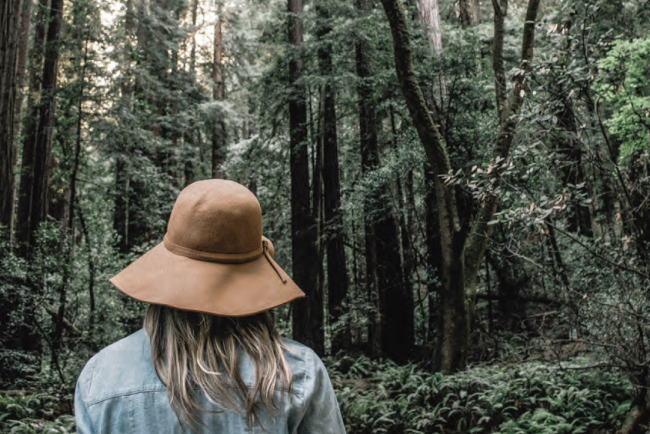
Mental Detox
In need of a mental detox? Here is a road map to declutter the mind. Perhaps there is nothing more powerful than our relationship with our thoughts. Our thinking can be as constructive as it can be obtrusive. And the messages we tell ourselves can […]
UncategorizedIn need of a mental detox? Here is a road map to declutter the mind.
Perhaps there is nothing more powerful than our relationship with our thoughts. Our thinking can be as constructive as it can be obtrusive. And the messages we tell ourselves can convince us something is divine or nudge us to confront a deep affliction.
Sometimes the very nature of our thoughts can become overwhelming. Clutter in the mind can resemble that of a shaken-up snow globe. Each flake represents a thought. So, when the flakes fall simultaneously it can make seeing things with clarity a bit of a challenge. And while waiting for the snow (our thoughts) to settle, we can feel anxious and insecure not knowing how or when things may settle down.
Declutter Negative Thoughts That No Longer Serve You
When you decide to clear and declutter obtrusive and negative thoughts from our head space, it helps prepare us for an inner journey of creativity and open ourselves to new growth experiences.
As an author, writer and life coach, I know that some of my brightest ideas and smartest solutions come during a run or after a meditation. When I’m traveling, I often visit an art museum. This tends to eliminate any travel stressors as well as expose me to powerful pieces of art. Just being in a gorgeous space amplifies both my thoughts and work.
Another approach to decluttering the mind is to manage work-related things, like emails, with a file system. While it may seem overly simplistic, in reality it can help to keep things, including our minds, organized. C-suite business executive and seven continent marathoner Michael Silvio says, “When I close an issue that arrives via email, I delete the email or place it in a file right away. At the same time I close it in my mind, and move on.”
For some, moving on can be a bit of a struggle, while for others it comes with ease. Dr. Deepak Chopra, author of the recent, best-selling book, Metahuman, says that observation can be helpful. Dr. Chopra explains, “I’ve never tried to clear negative thinking! It’s very stressful! I just observe thoughts as they float across the screen of my consciousness like clouds in the sky. I identify with the sky, not the clouds.”
Actually, getting outside to see the literal clouds can be an important way to open up the mind. Creativity expert and author Lisa Tener says one of her favorite ways to declutter her mind is to walk in nature. “Within minutes, I feel the stresses fall away, creating the space for creativity to flow,” she says.
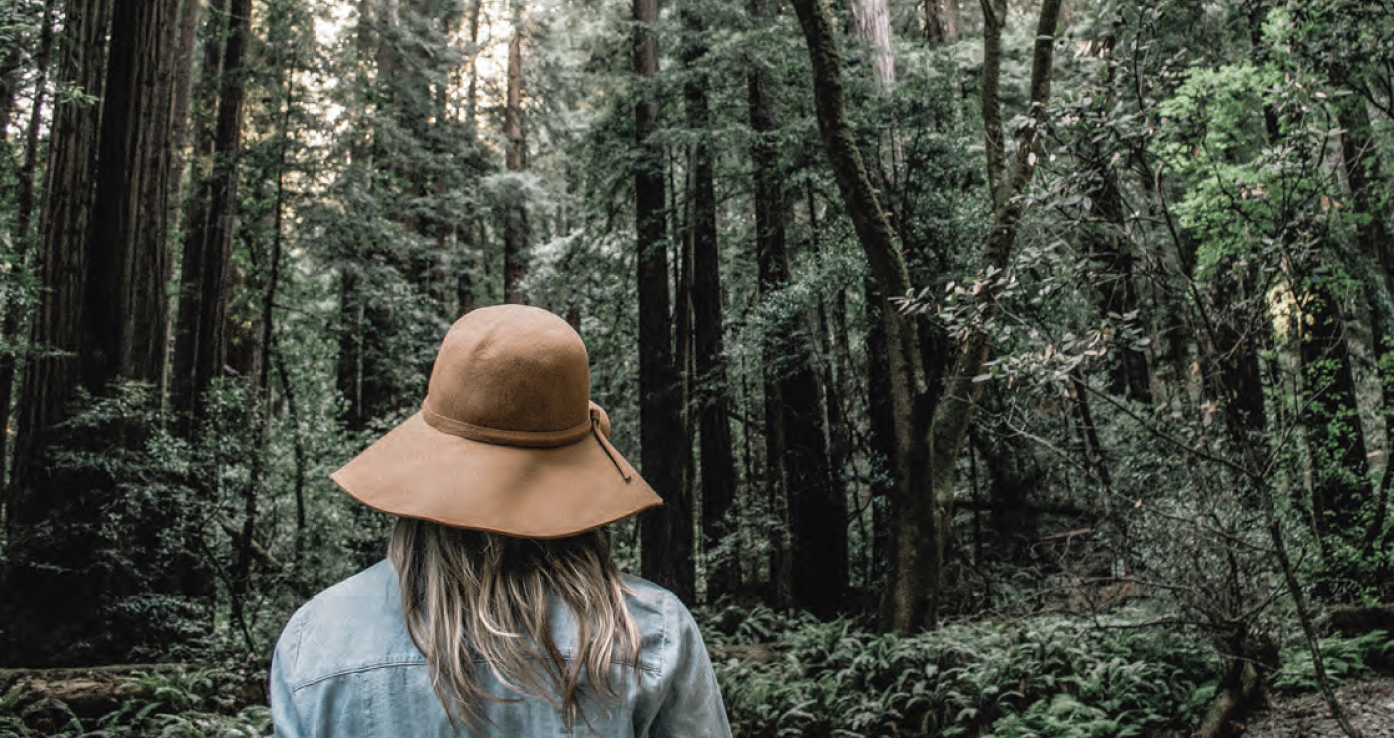
For those who are wondering how to activate the flow of creativity, Dr. Chopra says, “Creativity unfolds in the following steps: intended outcome, information gathering, information analysis, incubation-thru-meditation, spontaneous insight, inspiration, implementation, integration, incarnation.”Dr. Chopra adds, “It’s a shift in context, meaning relationship and story.”
When the student is ready the teacher will come…
And the story we tell ourselves about a situation can shape the way we handle future conversations and thereby impact outcomes. If we tell ourselves, “There is no help available,” we tend to view the world with a constricted lens. Things can feel very troubling. Yet, if we tell ourselves there is guidance available and we just need to find the right person, we will tend to try to sort through our thoughts logically. We will then see things as possible opportunities instead of obstacles.
It is also important to remember that exploring new ideas can be driven with a sense of purpose and child-like wonder. Journaling offers a safe way to examine thoughts and desires. Silvio adds, “Creativity is fueled by passion.”
The six inches between our ears is valuable territory. Instead of embroidering this space with frets and criticisms, perhaps, make an effort to be gentler and kinder with the words we speak to ourselves. This angle keeps the space open, which enriches new visions and amplifies the creativity process.
The post Mental Detox appeared first on Organic Spa Magazine.
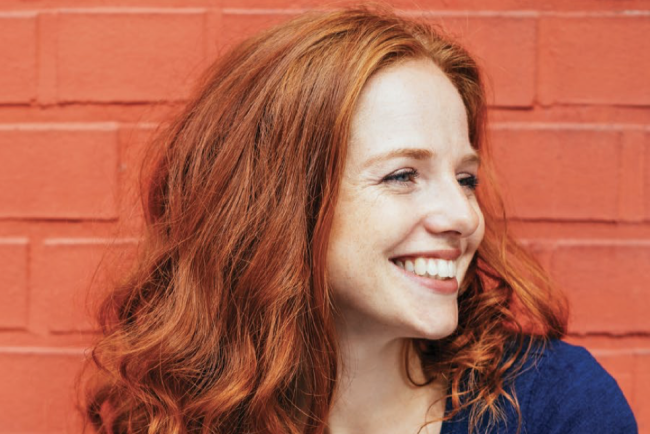
How to Be Happy
Happiness doesn’t come with an instruction manual, but these expert tips can certainly help.How to Be Happy If you are reading this, you are most likely longing for a life full of meaning, connection and bliss. In other words, you want to be happy. But instead, […]
UncategorizedHappiness doesn’t come with an instruction manual, but these expert tips can certainly help.How to Be Happy
If you are reading this, you are most likely longing for a life full of meaning, connection and bliss. In other words, you want to be happy. But instead, you may be in a personal crisis or feel overworked, underpaid, or all of the above. Perhaps the current political situation rattles your nerves, or the climate change worries you. Whatever it is, you want to know what you can do.
Happiness is a hot topic. There are thousands of studies on happiness; hundreds of articles and books written about it; colleges and universities now teach happiness courses; and on Instagram, #happiness and #happy have a combined 655 million mentions. The prescriptions for happiness are just as abundant: tips, hints and secrets, ready-to-manifest formulas that promise to help us attain a happier life. But does this all actually make us happy? And can looking for happiness actually lead to unhappiness?
“If you focus too much on your own happiness, just focusing too much on yourself in general, that can lead to unhappiness,” says happiness coach Tia Graham, founder of Arrive at Happy, in Los Angeles. “There are a lot of myths and misconceptions around happiness.”
One example is that kindness and gratitude can make you happier.
Sonja Lyubomirsky, a psychologist, leading researcher on happiness and author of The How of Happiness: A Scientific Approach to Getting the Life You Want, says that some happiness strategies can backfire: “Like expressing gratitude, which studies show might make some people feel awkward or it might make people feel guilty for not having repeated that kindness that you are grateful for, or for not having to thank the person; it might make you feel indebted.”
“Expressing gratitude, which studies show might make some people feel awkward or it might make people feel guilty for not having repeated that kindness that you are grateful for…it might make you feel indebted.”
Generosity and giving to others are also supposed to make you happier, but Lyubomirsky says her research shows that not all acts of kindness are appreciated or welcome, because “they can come off as patronizing or make a person feel vulnerable, or not self-sufficient.”
“People who are too generous often neglect their own self-care and focus too much on other people,” she explains. “[They] can be harmed by that, or feel that it’s a burden.”
Are we doomed? Is attaining happiness an impossible task? Is there actually a recipe for a happy life?
Dan Buettner, National Geographic Fellow and best-selling author of Blue Zones of Happiness, studied happiness and longevity in the happiest places in the world for the past 15 years. He says that the happiest people don’t pursue happiness.
“About 40 percent of your happiness or lack thereof is dictated by genes, 15 percent dictated by chance and 40 to 50 percent is dictated by what you do with your life,” explains Buettner. “And I argue that the most important thing you can do if you want to maximize that 50 percent within your control is to shape your social surroundings, your work surroundings, your home, the place where you choose to live so you are more likely to be happy.”
In other words, there are things you can do to stack your deck in favor of happiness.
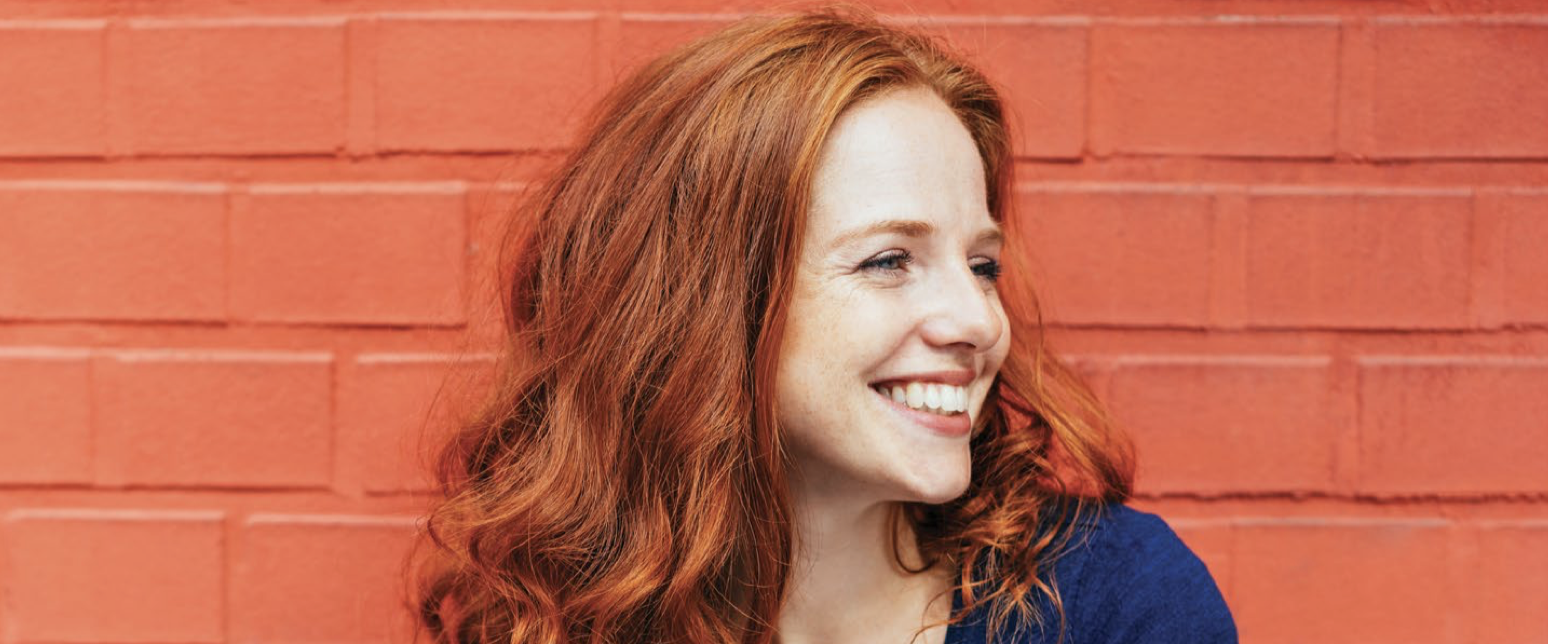
DEFINE YOUR OWN HAPPINESS
Happiness is an ephemeral thing and we often have a hard time recognizing it when we have it.
Do you know what happiness means to you? What do you want your life to look like? Graham defines happiness as acceptance of the journey and commitment to joy, and then poses a question: “What would you do if no one was watching, taking photos or even aware of you?”
Now, knowing this, what would you do differently?
CURATE YOUR SOCIAL CIRCLE
Friends are important to your happiness. It’s no wonder the expression, “Show me who your friends are and I’ll tell you who you are,” is so widely used. But it’s not just about having friends you’ve accumulated through life, cautions Buettner. It’s about curating a group of friends. “They have to be people with whom you would trust to have a meaningful conversation, talk about your relationships, be vulnerable, talk about your struggles, not just happy face and fluffy talk. They have to be people you can call on a bad day and they’ll care. The type of people who’d loan you money when you hit rock bottom, and you actually have to like them.”
PRACTICE HAPPINESS DAILY
“Just like exercising your body leads to endorphins and builds muscle, exercising your brain creates new cells,” says Graham. Recent studies on neuroplasticity suggest that we can rewire the neural pathways that regulate our emotions, thoughts and reactions. But we have to practice it daily. So instead of feeling angry when you are in traffic, for example, you can consciously switch your attention to something joyful in your life or remind yourself of a moment that brought you joy. “Theory doesn’t make you happy, practice does,” teaches Graham and recommends creating rituals to help you on your own path to happiness.
RESPECT YOUR EMOTIONS
Who hasn’t felt guilty about feeling something you believe you shouldn’t be feeling? You can swap the habit of feeling guilty by simply observing your emotions or writing them down. “All emotions are acceptable and are part of being human,” reassures Graham. The challenge is that we judge difficult emotions by calling them “negative” instead of acknowledging them and watching them pass. Graham recommends asking yourself a question: “I would be even happier in my life if I was more fully honest with myself about…”
MOVE TO A HAPPY PLACE
“If happiness were a cake recipe and the ingredients would include you need enough money, you need food and shelter, and healthcare, you need some mobility and enough money to treat yourself once in a while; you want to have meaningful work and you want to have something to give back. These are all important ingredients, but the most important ingredient to happiness is where you live. We know if you live in an unhappy place, you are most likely to be unhappy,” says Buettner.
Buettner’s research followed immigrants from unhappy places like poorer countries in Eastern Europe to happy places (for a list of happy places to live, go to gallup.com) like Denmark, for example, and within a year with no other changes except for the move, they were reporting increased happiness levels in their adoptive homes.
LIVE YOUR LIFE AS IF YOU ARE A CHILD
Think back to when you were a kid, and remember the small things that got you excited and feeling happy. “I believe in the idea of awe and wonder, a perspective like ‘Wow, I’m alive and I wake up every single day, and noticing and savoring the small things in life.’ And when you take that time and look at everything that’s around you, it sounds so simple. I believe that’s also a path to happiness,ww too,” says Graham.
EVALUATE YOUR CHOICES
Lyubomirsky’s quest to find out why some people are happier than others led her to realize that the old cliché that happiness lies within us is actually supported by her research.
“Changes in our lives probably won’t make a huge difference in happiness, it’s really what’s inside, how we behave, how we think in our daily lives that’s going to matter,” she says. “Unless we are really bad off, like if we are in an abusive relationship, for example, getting out of that relationship will make you happier forever.”
LIVE AN ALIGNED LIFE
Do you know your top values? Do you know if the activities you do daily are aligned with your top values? “Your behavior needs to be aligned with your values,” says Graham. “If it doesn’t, you will be unhappy.”
“So often we mistaken the idea of something for the thing itself,” Graham cautions. “Ask yourself if you really like the thing you think you like, or you simply like the idea of it.”
The post How to Be Happy appeared first on Organic Spa Magazine.






